
Greetings
When Robert Fortune, a Scottish botanist, visited Japan at the end of the Edo period in 1860, he was surprised to see people growing plants all over the city. He wrote about his travels in “Yedo and Peking; A Narrative of a Journey to the Capitals of Japan and China ” where he duly noted “the remarkable characteristic of the Japanese national temper is that everyone, even the lower classes, has an innate love of flowers. If we take a national character that loves flowers as proof of the height of a people’s cultured life, compared with English people of the same class, the Japanese are far superior”. We have loved flowers since the Edo period and have lived lives with flowers. Even in the current modern times, the wholesale market ? a social infrastructure ? has played a role as a coordinator connecting producers to actual consumers in order to achieve such a lifestyle. Amongst the numerous wholesale markets, we have implemented the following innovative initiatives as a front-runner in the distribution of ornamental plants:
- development of ALFLOC , an aluminum multi-tier utility cart, in 1990, to introduce an integrated logistics system using utility carts throughout the production areas to the retail outlets
- development of the ELF bucket system in 2002 to popularize wet transport in buckets specially designed for cut flowers
- expansion of the wholesale area with central air-conditioning and heating in 2004, and
- active investment in information systems to promote computerized transactions.
These have proven effective in enabling efficient logistics, improving flower shelf-life, closing accurate transactions, and expediting paperwork. However, the environment surrounding us is undergoing rapid and drastic changes ? our social structure is changing due to a declining birthrate and an aging population; distribution and retailing are diversifying due to deregulation; information transmission is changing due to the spread of the Internet and social media; employment and working environment is changing due to revised laws; consumer behavior is changing; even our social activities are changing due to the global pandemic. We will strive to enhance the functions of the wholesale market, as well as continue to challenge ourselves as the JFI Group to create new ways of distributing ornamental plants in a more efficient manner in light of the upcoming changes in our environment.
Philosophy
At Flower Auction Japan, Inc., we aim to be a leading company that plays a leading role in central wholesale market functions, including setting fair prices as well as providing a logistics system that prioritizes the quality of products and market information, as a central base for the ever-expanding distribution of ornamental plants.
Our purpose
- Create enriched living spaces by creating encounters between flowers, greenery, and people.
- Help the growing and diversifying floral industry to thrive and develop further.
Management stance
- Respond to customer needs in a sensitive manner through active exchange of information and human interaction.
- Actively develop advanced fields based on sound management practices and create a hopeful future.
- Create a workplace where everyone can share the pride and joy of developing the company.
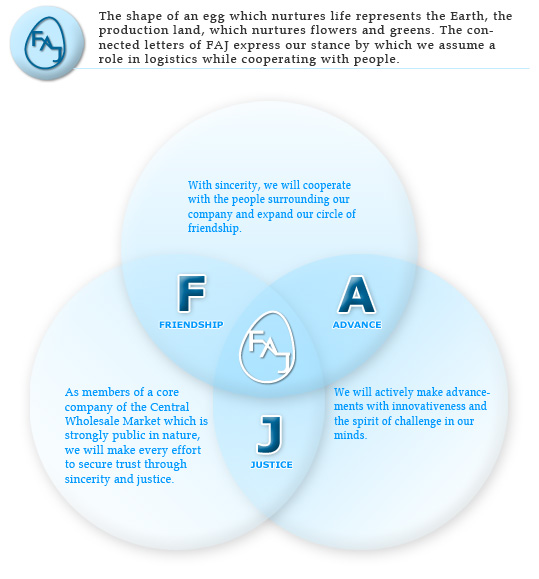
Corporate Information
Trade name:
Flower Auction Japan, Inc. (FAJ)
Representative President & CEO:
Tetsuya Fukunaga
Location:
Our business:
Wholesaler in Ota Market Flower Building, Metropolitan Central Wholesale Market (Permission granted by the Minister of Agriculture, Forestry and Fisheries)
Ornamental plants = Wholesale of ornamental gardening plants (cut flowers, pots)
Founding & establishment:
Established on: Oct 1, 1988
Opened on: Sep 5, 1990
Business started on: Sep 8, 1990
Capital:
100 million yen (unlisted)
No. of employees:
152 (108 men, 44 women) *Including part-timers
Main partners:
Suppliers: National Federation of Agricultural Co-operative Associations & Japan Business Federation, Japan Agricultural Cooperatives, importers, individual producers
Customers: Supermarkets, home centers, garden centers, florists
Import & Export Business Division
Flower Auction Japan, Inc. handles the direct import and export of cut flowers.
Import
Since 2012, we import various flowers from more than 15 countries around the world.
Export
Since 1995, we export domestic cut flowers to the Netherlands, China, Vietnam, and other Southeast Asian countries.
Link for our partners http://my-japan.faj.co.jp/Fair Trade Flower
At Flower Auction Japan, Inc., we have started handling Japan’s first Fairtrade flowers as part of our activities to contribute to the international community. Fairtrade is an arrangement to support the economic and social independence of producers as well as conserve the environment by trading raw materials and products with producers at reasonable prices.
Started Fairtrade flowers as part of our CSR activities
As we want many consumers to know what Fairtrade means, we became the first company in Japan, and 15th company in the world, to register with the Fairtrade Labeling Organizations International (FLO; Germany) to import and process ornamental plant products.We will donate all the proceeds from these ornamental plant products to a wide range of CSR activities such as children’s education and hospital construction.
What is Fairtrade?
Choosing Fairtrade flowers is a small way of how we can give back to the person who grew the beautiful flowers in a safe manner as well as Mother Earth.
- Fairtrade is a global activity
- Highly transparent Fairtrade
- Fairtrade label
- Guarantee Fairtrade prices for producers
* Guarantee purchase price: We purchase and import from them at fixed prices.
* Premium payments for support: We additionally pay them 8% of the local selling price of bouquets and 12% of the selling price of individual roses . - Guarantee the social development of producers
* The producers union conduct activities in a democratic and transparent manner.
* We will use part of the profits earned through Fairtrade for CSR projects.
Example: Projects like building wells or schools. - Guarantee the economic development of producers
* Produced products meet the quality standards for export.
* We will use part of the profits earned through Fairtrade for economic development activities.
Example: Preparing necessary equipment and facilities, etc. - Guarantee the working environment and working conditions of producers
* They are to observe the working conditions set by the ILO (International Labour Organization).
* Prohibition of forced labor and child labor(For child labor, family labor is permitted within the scope where their education and growth are not hindered.)
* Workers have the right to collective bargaining - Guarantee the environmental conservation of the production area
* They are to comply with international regulations regarding the use of chemicals, water quality conservation, forest conservation, soil conservation, and waste handling. - International cooperation through Fairtrade flowers...
Fairtrade products are produced in a total of 45 countries in Latin America, Africa, and Asia, and 433 production associations have registered as Fairtrade producers (as of January 2005). A total of 20 countries, including almost all of Europe, the United States, Canada, and Japan, are currently participating in Fairtrade. While Fairtrade initiatives have just begun in Japan, they are already widely recognized across the world as CSR activities.
The Fairtrade Label Movement began in the Netherlands in 1989 and in Germany in 1992. In 1997, a unified organization called the FLO (Fairtrade Labeling Organizations International) was established. The role of the FLO is to set international standards for Fairtrade, allow participating vendors to use the Fairtrade Label, and conduct audit for producers and consumers so as to ensure that the standards are being kept.
To achieve highly transparent Fairtrade , national-level organizations in each country (Fairtrade Label Japan in Japan) conclude license agreements with domestic sellers, manage the licenses, mediate between sellers and the FLO and producers, as well as support their local producers.
Fairtrade certified farms carry out production activities based on the following principles.
Fair trade flowers are traded with a guaranteed purchase price to the producer, and farms receive a certain incentive payment. The small pleasure of decorating your room with beautiful flowers actually improves the lives of many people.
"A big CSR circle that starts from a small bouquet"
Would you like to participate in an international cooperation with Fairtrade flowers?
■For inquiries, please contact the Cut Flower Division
■For inquiries regarding Fairtrade: Fairtrade Label Japan (Specified NPO)
Quality Declaration
In the Netherlands, MPS started as an environmental impact reduction program for the floral industry, expanded to include labor environment, freshness and quality assurance, and in 2004 combined with Florimark, the ISO certification system for floral distributors, to become the global standard certification for the floral industry. In 2004, it was combined with Florimark, the ISO certification system for floral distributors, and became the global standard certification for the floral industry. It has also become the benchmark certification for EurepGAP and continues to grow as a comprehensive certification system for the floriculture industry.
FAJ's "Quality"
The cut flowers and potted plants we handle are produced with great care by the growers. We need to liveup their expectations. To this end, it is our social responsibility to maintain quality and freshness while properly delivering the product to the consumer, and our "quality" is to enhance the accuracy of our products. It is also our responsibility to deliver the flowers our customers. In January 2008, we formulated our Quality Declaration and pledged to continue our unceasing efforts to improve quality. GPA in MPS-Florimark. At the same time, we formulated a quality manual as a guideline for action, and on April 14, 2008, we obtained the MPS

MPS GPA acquisition
Flower Auction Japan, Inc. has been working toward MPS certification with the goal of becoming a quality and environmentally conscious distributor ourselves, certification. We are pleased to announce that we have received our MPS GPA certification as of April 14, 2009. and to support growers who are moving toward MPS-Florimark Production
What is MPS
MPS is a comprehensive certification program for the floriculture industry, an international certification that originated in the Netherlands and has spread throughout the world. Florimark Auction for wholesalers in flower markets. It consists of two certification programs, MPS-Florimark Production for flower growers and MPS-Florimark Trade for flower distributors. The MPS GPA that we have certified is the first step in MPS-Florimark Auction. Incidentally, GPA is an acronym for Good Practice for Auction, and MPS-Florimark Auction certification can be obtained by additionally acquiring ISO9001:2000. For more information on the MPS certification system, please refer to the website.
Quality Manual established as a guideline for action
In order to obtain MPS GPA certification, Flower Auction Japan, Inc. has developed the FAJ/MPS GPA Quality Manual. The manual covers a wide range of areas including quality control from receiving to shipping, process management, employee training, and compliance, and serves as a rulebook for the company itself. In the area of quality control, the FAJ Quality Standards have been established to demonstrate our basic stance on quality. In addition, we have summarized what we expect our business partners to observe in the FAJ Shipper's Standards, FAJ Collection and Delivery Standards, and FAJ Product Pickup Standards, respectively. Flower Auction Japan, Inc. aims to be a wholesaler that satisfies all customers by establishing and adhering to manuals and respective standards.

Environmental Declaration
In the Netherlands, MPS started as an environmental impact reduction program for the floral industry, expanded to include labor environment, freshness and quality assurance, and in 2004 combined with Florimark, the ISO certification system for floral distributors, to become the global standard certification for the floral industry. In 2004, it was combined with Florimark, the ISO certification system for floral distributors, and became the global standard certification for the floral industry.
We support the spread of our products to the floriculture industry with the aim of environmental management.
Flower Auction Japan, Inc. wanted to support environmentally conscious production and distribution for the floral industry, while aiming for environmentally conscious management ourselves. And in January 2008, we made an Environmental Declaration. Based on the principles of the Environmental Declaration, we are carrying out the following activities.
Supporting ELF Bucket Dissemination
Flower Auction Japan, Inc. wanted to support environmentally conscious production and distribution for the floral industry, while aiming for environmentally conscious management ourselves. And in January 2008, we made an Environmental Declaration. Based on the principles of the Environmental Declaration, we are carrying out the following activities.
Supporting Environmentally Friendly Production
A system of recognizing and certifying environmentally friendly production is beginning to spread throughout the agricultural world: the labeling of "organic" and "specially cultivated agricultural products" under the JAS Law, certification as an Eco Farmer under Article 4 of the Sustainable Agriculture Law, and certification by MPS-Florimark Production, an international certification for the floriculture industry. The certifiers of all of these certifications are certified by the MPS-Florimark Production international certification organization. In each of these certifications, the certifier is allowed to use a certification mark, etc., and the certification mark is displayed on the packaging, boxes, etc., of shipments. We support shippers who have obtained these certifications. We will clearly indicate on our auction display boards that they are certified by the respective certifiers, and we will inform our customers of such certification when selling on a reserved basis or in a negotiated transaction. We will also provide a place to exchange information with those who have obtained various certifications.
Indication of MPS registered producers
On the auction display panel, the producer's name is preceded by the letters "MPS" and a certification icon is displayed.


Flower retention test chamber
FAJ's research team, the Flower Preservation Test Laboratory (Test Room), continues its research on how to preserve the beauty of flowers for a long time. Based on the results of this research, we also provide advice on distribution quality control to all those involved in flower distribution.
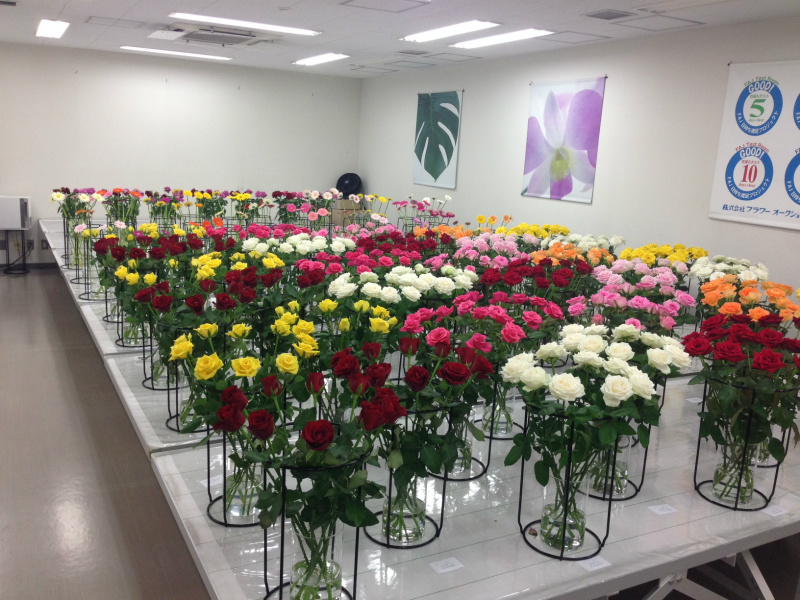
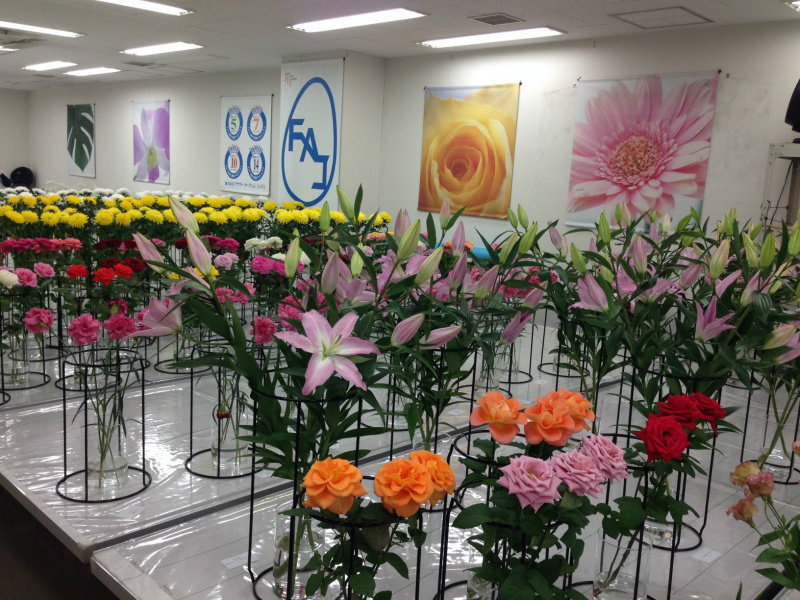
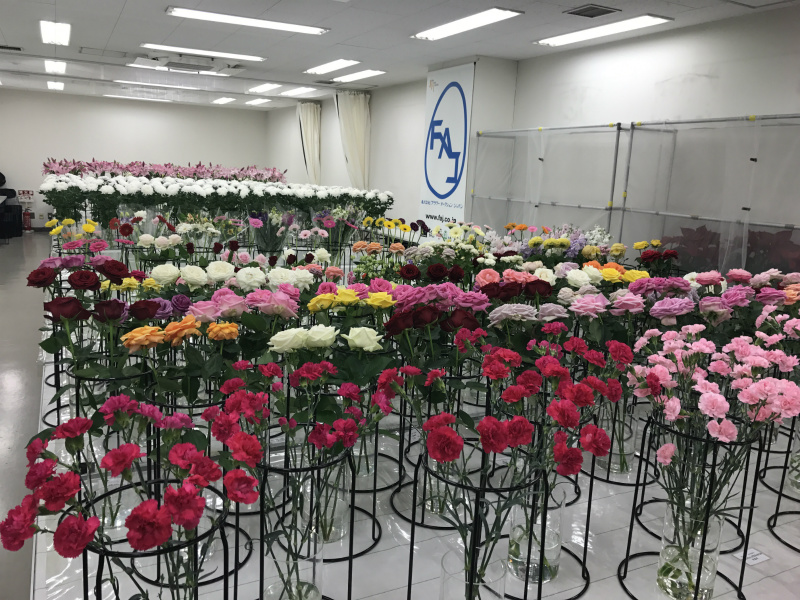

About Ota Market
Introduction of Ota Market, in which FAJ is located.
What is Ota Market, the Tokyo Metropolitan Central Market?
Ota Market is a complete market comprised of the fruit and vegetable department, seafood department and flower and ornamental plant department. Efficiently placing the facilities in an area as large as 386,000 square meters, it also has parking for 5,000 cars. Surrounded by approximately 6 ha of green space and being integrated with an adjacent wild bird park, the market is rich in green.
Moreover, the market aims to become a fun place for the general public by having tourist courses, exhibition rooms and projection rooms.
Various Symbol Marks
Choosing Fairtrade flowers is a small way of how we can give back to the person who grew the beautiful flowers in a safe manner as well as Mother Earth.
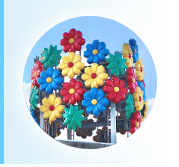
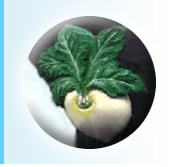
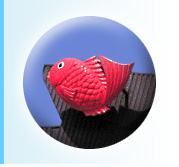
Tokyo / Market History
Due to the Great Kanto Earthquake which occurred in September 1923, twenty-some preexisting private markets in Tokyo received devastating damage.With this earthquake as a turning point, Tokyo City of the time adopted a serious stance on construction of a central wholesale market based on "the Law of Central Wholesale Market" which had been promulgated in March that year.
As a result, 3 much-awaited wholesale markets were opened in Tsukiji, Kanda and Koto. Subsequently, due to a substantial increase in handled goods caused by urban development and population increase, new markets were opened one after another including Ebara, Toshima, Yodobashi, Adachi, Omori, Shokuniku (edible meat), Itabashi and Setagaya.The rapid economic growth in the late 1960s to early 1970s greatly changed the surrounding environments of the markets such as enlargement of shipment units, increase of truck transport and diversification of diet.
Also in terms of legislature, to deal with the aforementioned rapid changes, "the Law of Wholesale Market" was promulgated in April 1971.The Tokyo Metropolitan Government also opened each market of Kita-Adachi (1979), Tama New Town (1983), Kasai (Transferred from Koto, 1984), Ota (transferred from Kanda, Ebara and Omori, 1989), and operations are currently performed at 11 markets and 4 branches.
The "flower and ornamental plant department" which was established for the first time in Metropolitan Central Wholesale Market in Kita-Adachi Market in 1988 was also established in 4 more markets including Ota (1990), Itabashi (1993), Kasai (1995) and Setagaya (1998).
The Tokyo Metropolitan Government proceeds further with market development with a vision for the 21st century and aims for creation of modern ""open markets" enjoyed by its people, while adapting to environmental changes.
History of Ota Market
In the years of Keicho when the Tokugawa Shogunate was opened, a fruit and vegetable market was opened in Yatsujigahara, Edo (around modern-day Suda-cho, Kanda). Based on the market, Kanda Market was developed.Ebara Market was opened together with Kamata Supply Station (Kamata Branch) in 1936 by combining a few wholesale markets. Officially becoming a market in 1880, it has been told that Omori Market originated in the Edo period when neighborhood fishermen brought fish and seashells to sell. In 1989, these 3 markets and 1 branch were combined and reborn as Ota Market.
Regarding the flower and ornamental plant department, 9 private regional wholesale markets which existed in the Jonan area were combined. Currently, it is comprised of 2 wholesalers (1 of which is FAJ) and 20 intermediate wholesalers.
(From Market Guide 1995, published by Metropolitan Central Wholesale Market)
Distribution of Cut Flowers
"How do cut flowers arrive at the market?" "How do they get to the retailer's shops?" To answer these questions, in a conversation style, Souta and Hanako will guide you through the distribution channels that cut flowers pass through from their area of production to customers.
Production - Where cut flowers grow

It is said that there are about 85 thousand cut flower producing households all over Japan, from Hokkaido to Okinawa. In each of those regions, various flowers that match the region's climate and locality are grown.

How long does it take for the flowers to get harvested?

The duration from sowing to harvest is about 3 months for faster growing plants. The average is somewhere between 4 to 6 months. Cut flowers are sometimes grown from seedlings, but it takes about the same length of time for most plants to be ready for shipment. But, flowers like cymbidium that take a long time to bloom are kept and taken care of carefully in a greenhouse for more than 3 years.

Where do seeds and seedlings come from?

In most cases, seeds, seedlings and bulbs are purchased from seed and seedling companies, but some producers do develop new brands on their own, and they are called "breeders".
Shipment - Until cut flowers arrive at the market

I wonder how the harvested cut flowers reach the market.

Cut flowers are usually bundled in groups of 10 to 20 and get shipped in a unit of 100 flowers. The majority is shipped placed horizontally in a cardboard box, but increasingly more producers pack their flowers vertically in a cardboard box with water at the bottom or use the ELF Bucket System (bucket distribution).

And then they come to the market, right?

There are two shipment methods; one is the "auction" type, and the other is called "appointed negotiated transaction" in which the market asks a producer to ship certain goods upon receiving a request from a buyer. In terms of distribution, just like vegetables, cut flowers are gathered at a shipping organization such as Japan Agricultural Cooperatives and then shipped to the market in most cases. There does exist a direct distribution route from producers to retailers, but because flowers are fragile, the general route is through a specialized market to the retailers.
Reception of Goods & Auction - Finally the main part, the auction!

And now, between the day prior to auction and the dawn of the auction day, trucks one after another arrive at the market to deliver the goods.

Each of the received cardboard boxes of products has a "Cargo Reception Sticker" with its production area and product information on it.

Buyers prepare for auctions by previewing the received products before the auctions. Cut flower auctions are essentially held on Mondays, Tuesdays, Wednesdays, Fridays and Saturdays. Of these, more goods are received on Mondays, Wednesdays and Fridays, and these days are called Omotebi or the Front Days. On the other hand, only one tenth of goods are received on Tuesdays and Saturdays, and together with Thursdays, the fixed holiday, these are called Urabi or the Back Days.

Auctions start at 7:00 with the greeting of "Good morning!" as its starting signal.

At FAJ, an automated auction system has been in use since September 1995. So, just by pushing a button on the auction panel, you can bid on one product in only a few seconds. Through this auction system, a purchase invoice is issued twice for the buyers, once during the auctions and then after the auctions, and to each of the producers, a sales invoice is sent on the same day by mail or fax.

I heard that some retailers do not participate in auctions but purchase from an intermediate wholesaler. Recently, some flowers have been processed into bouquets and get widely distributed as "casual flowers".
Allotment, Discharge and Sales - Finally to the customers.

It is also the market's responsibility to allot the purchased products to a predetermined location for each buyer. Products which have been bid off and labeled with a purchase sticker get moved onto a belt conveyor. Then, according to the buyer's number written on the purchase sticker, they get allotted onto the right trolleys.

And then the buyers load their purchased flowers onto their truck and leave for shops by noon.

Some flowers get transferred to a market outside of the region, but on the auction days, the market becomes surrounded by retailers' trucks.

And then at a retailer's shop, flowers undergo some preparation to maintain their freshness and wait for the customers there!
Distribution of Potted Plants
"How do they reach the market?" "How do they get to the retailers' shops?" To these questions, Souta and Hanako will, in a conversation style, guide you through the distribution channels of potted plants starting from their production area.
Production - Where the potted plants grow

It is said that there are about 45 thousand potted plant producing households all over Japan, from Hokkaido to Okinawa. In each of those regions, various flowers that match the region's climate and locality are grown.

How long does it take for the plants to get harvested?

The duration from sowing to harvest is about 3 months for faster growing plants. The average is somewhere between 4 months to 6 months. Some are grown from seedlings, but it takes about the same length of time for most plants to be ready for shipment. But, plants like foliage plants that take a long time to be prepared are kept and taken care of carefully in a greenhouse for more than 3 years.

Where do seeds and seedlings come from?

In most cases, seeds, seedlings and bulbs are purchased from seed and seedling companies, but some producers do develop new brands on their own, and they are called "breeders".
Shipment - Until potted plants arrive at the market.

Potted plants are put into plastic cases depending on their pot size, and they are shipped in case units. Seedlings for flowerbeds are put in cases of 24, and size-5 pots are put into cases of 6. Under a predetermined agreement that cases be returned by the users, cases containing potted plants are placed into shelved trucks. In other cases, the whole trolleys containing these cases are placed into trucks. At FAJ, ALFLOC is used for convenience.

Potted plants are often shipped by individuals, but in some cases, they are shipped by organizations such as regional horticultural associations.

There are two product types; one is the "auction" type, and the other is called "appointed negotiated transaction" in which the market asks a producer to ship certain goods upon receiving a request from a buyer. In response to shipment requests from producers or orders put forth by FAJ, collection requests are forwarded to affiliated shipping companies, and their trucks will go around the production area to collect products.
Reception of Goods & Auction - Finally the main part, the auction!

In the evening two days before the auction day in Aichi and surrounding areas, and in the evening the day before the auction day in the Kanto and Tohoku regions, shipment of products start. By the dawn of the auction day, huge trucks surround the market.

Each of the received containers with products has a "Cargo Reception Sticker" with its production area and product information on it.

Buyers prepare for auctions by previewing the received products before the auctions. Potted plant auctions are essentially held on Tuesdays, Thursdays and Saturdays.

Auctions start at 7:00 with a greeting of "Good morning!" as its starting signal.

At FAJ, an automated auction system has been in use since September 1995. So, just by pushing a button on the auction panel, you can bid on one product in only a few seconds. Through this auction system, a purchase invoice is issued twice for the buyers, once during the auctions and then after the auctions, and to each of the producers a sales invoice is sent on the same day by mail or fax.

I heard that some retailers do not participate in auctions but purchase from an intermediate wholesaler.

Yes, among the buyers, there are retailers, intermediate wholesalers as well as wholesale dealers.
Allotment, Discharge and Sales - Finally to the customers.

At FAJ, there is a configured database for creating loading lists to accommodate purchases made by each branch of volume retailers. For loading of the purchased products, it is made so that the system can output a product check table for each buyer. The products which have been bid off and received their purchase sticker will be moved to the pre-registered location of the buyer for easy loading.

And then the buyers load their purchased flowers onto their trucks and leave for shops by noon.

Some flowers get transferred to a market outside of the region, but on the auction days, the market becomes surrounded by retailers' trucks. At FAJ, they also provide customers with a delivery service in which the purchased products get delivered to each branch of a volume retailer.

And then, potted plants will wait for the customers at a retailer's shop!

